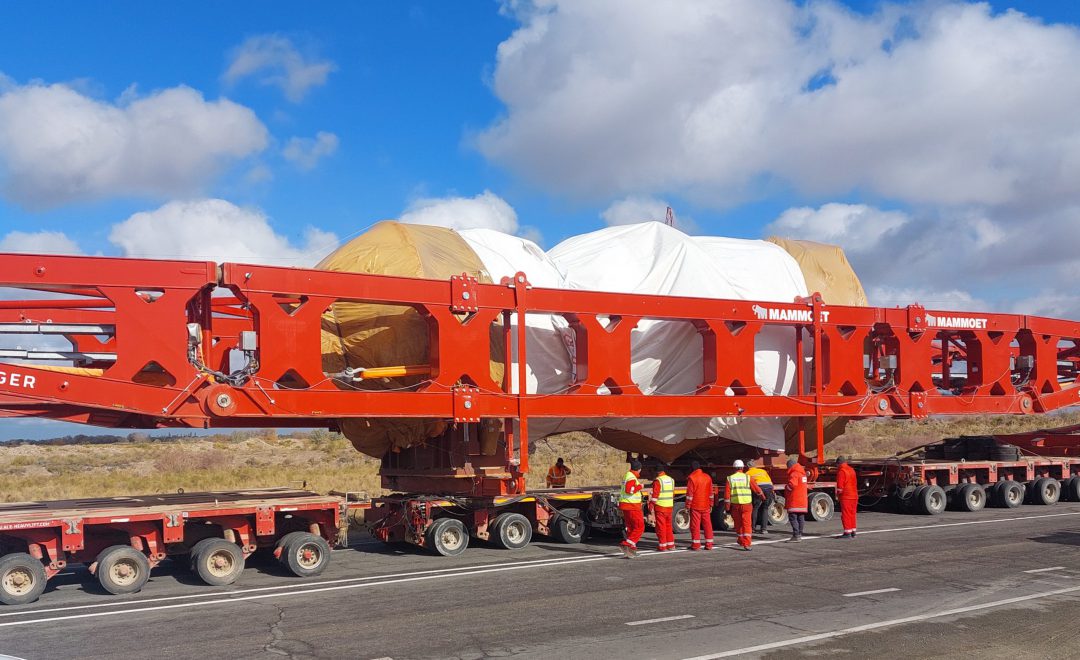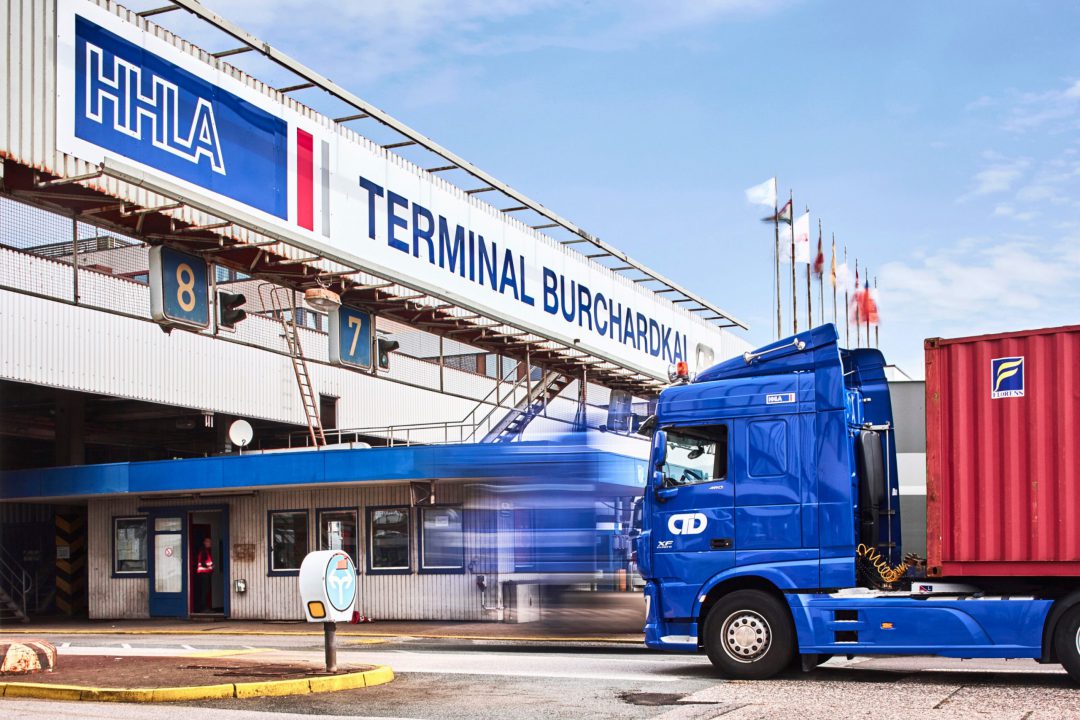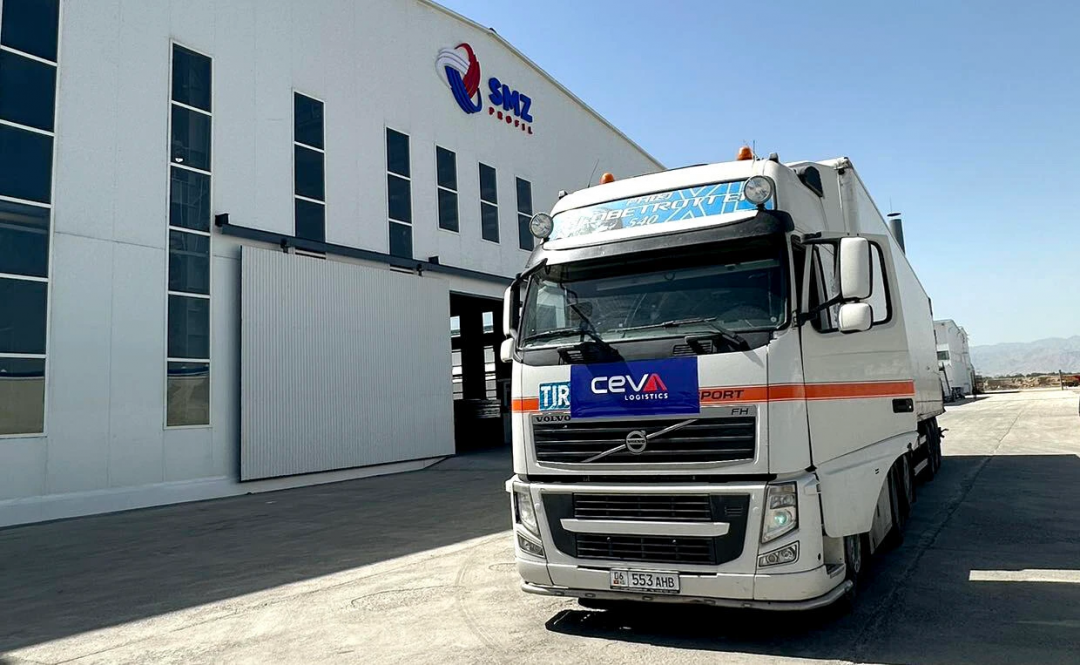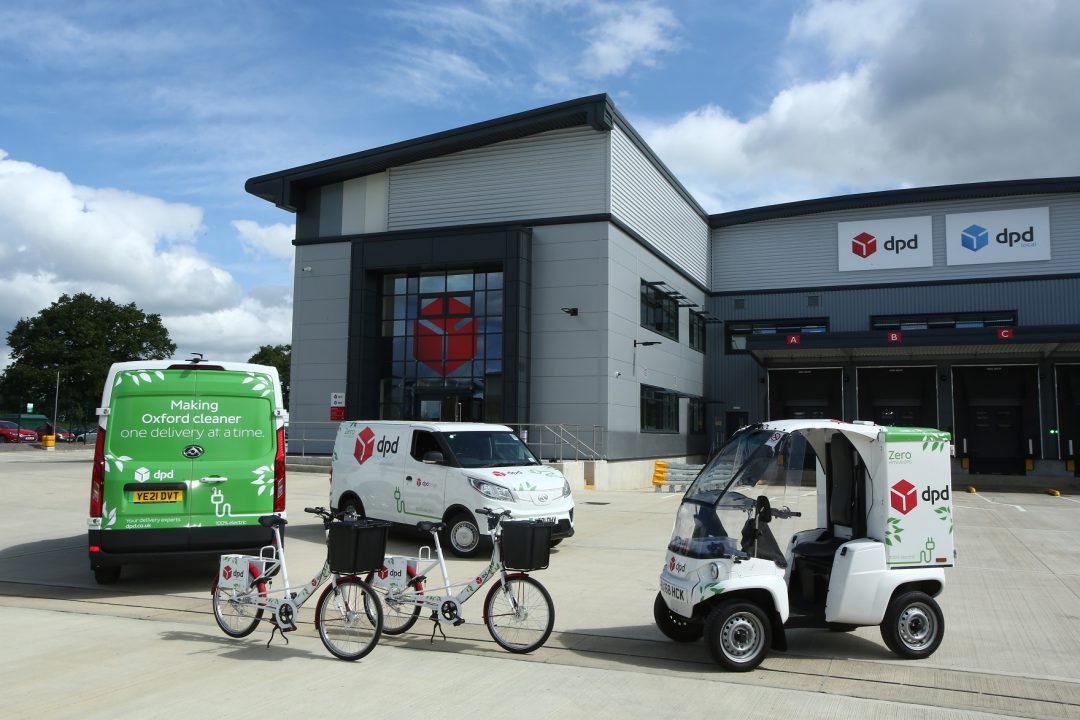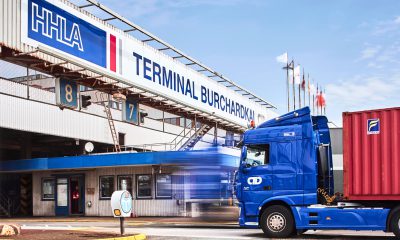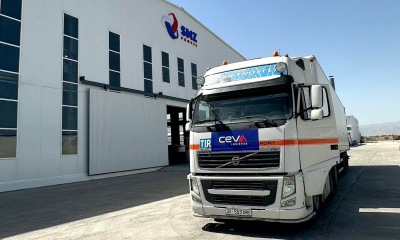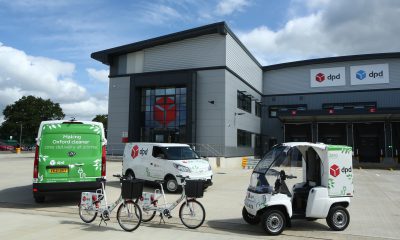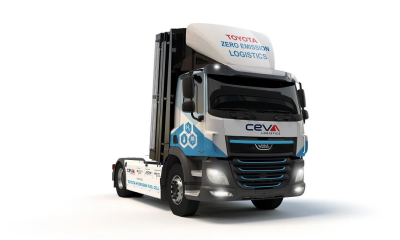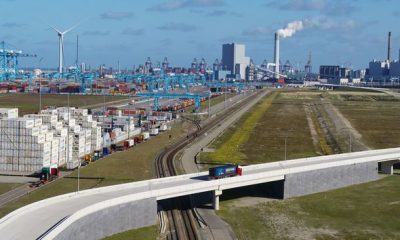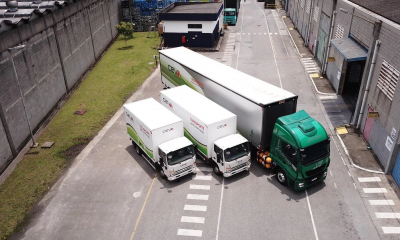Hilly terrain, tight curves, narrow roads, and bridges with limited load-bearing capacity – the three 2,200 km journeys with gas turbines weighing up to 517 t from the Kazakh port of Bautino to the Sirdarya CCGT plant in Shirin, Uzbekistan were a special challenge for the heavy-haul specialist Mammoet. In view of the very varied topography, the route was divided into three sections, each of them requiring a specially tailored solution to get the cargo to its destination quickly and safely. Mammoet Kazakhstan found the ideal solution in its versatile, robust and reliable THP/SL heavy-duty modules from Goldhofer. In combination with two Goldhofer »ADDRIVE« modules, plus »ADDRONIC« for the synchronization, more than 68 axle lines were in use at peak times.
Rapid progress on the first part of the route
For the first 500 km section, mainly on good roads, a THP/SL 19-axle side-by-side combination was chosen to transport the gas turbines. Up to five prime movers (three in the front and two at the back) were used to handle the many steep gradients. MAN 41.680 heavy-duty trucks with V8 engines developing 680 hp ensured that sufficient traction and pushing power were available at all times.
Optimum weight distribution as a key to success
With its steep curves, narrow unsurfaced roads, and bridges with limited load bearing capacity, the second section through Uzbekistan posed further challenges for the Mammoet team. In order to be able to negotiate the curves and also achieve optimum weight distribution on the bridges, the up to 15 m long and 6.3 m wide gas turbines weighing approx. 517 t each were transloaded onto Mammoet’s high girder frame AL600, then mounted front and rear on a 20-axle THP/SL Split (1+1/2) combination with »ADDRIVE«. The Mammoet specialists used Goldhofer’s »ADDRONIC« to synchronize the »ADDRIVE« modules. This enabled the two »ADDRIVE« units to be fully integrated in the combination for additional traction and pushing power on steep inclines. The full power was available at a click of a single button to bring the convoy to top speeds of up to 18 km/h.
The heavy-duty self-propelled modules »ADDRIVE« can support speeds of up to 25 km/h. Such a combination ensured both enough tractive power to carry the ultra-heavy loads up the hills and the braking power needed for safe travel on the downhill sections. At higher speeds, the »ADDRIVE« modules switches off automatically and then switches back on again when the speed fell below 25 km/h.
The main obstacle for the 100 m long and 900 t heavy convoy on this section of the route was the many bridges whose load-bearing capacity was far too low for such a combination. The 60 axle lines of the THP/SL heavy-duty modules alone were insufficient to meet the maximum axle load requirements. In order to observe the limits on the individual bridges, the heavy-haul experts at Mammoet employed a strategy that they had already used many times before: They positioned an 8-axle Goldhofer modular vehicle, known as a belly trailer, directly under the high girder bridge to let it take a share of the heavy load directly. “The 8 axles under the high girder bridge had to be steered separately front and rear. Continuous monitoring and adjustment of suspension on the belly trailer enabled us to pass over each of the bridges safely and reliably at walking pace,” says Marek Lysko, Operations Manager at Mammoet Kazakhstan.
Self-propelled arrival at the power plant
On the last section of the journey, Mammoet loaded the turbines on a heavy-duty self-propelled combination, which covered the last kilometers to the power plant.
As with numerous previous projects, Mammoet’s experts were again convinced by the high quality and versatility of Goldhofer’s vehicle solutions: “We were able to plan and implement the whole operation with such precision because Goldhofer’s heavy-duty modules can be combined with extreme flexibility and configured to meet very specific requirements. Continuous support from Goldhofer project and service departments helped us to plan and execute the project with the highest level of engineering, safety and performance.” says Marek Lysko.
“This project reinforced our reputation as a trusted heavy-transport logistics partner to Central Asian market. Concentrated power of will of the team, skills of engineers, reliability of personnel made sketches and drawings come to reality”, says Ali Yoldashov, Mammoet’s Regional Manager – Caspian.
Sirdarya power plant
ACWA Power’s 1.5 GW Sirdarya power plant near the city of Shirin, Uzbekistan, is designed to improve power generation efficiency and capacity in Uzbekistan while boosting economic growth and reducing the environmental impact. The combined cycle power plant has two 750 MW power generation units with an efficiency of more than 60 percent and is thus able to make a major contribution to Uzbekistan’s energy needs while delivering annual savings of up to 2.2 million tons of carbon dioxide emissions.
